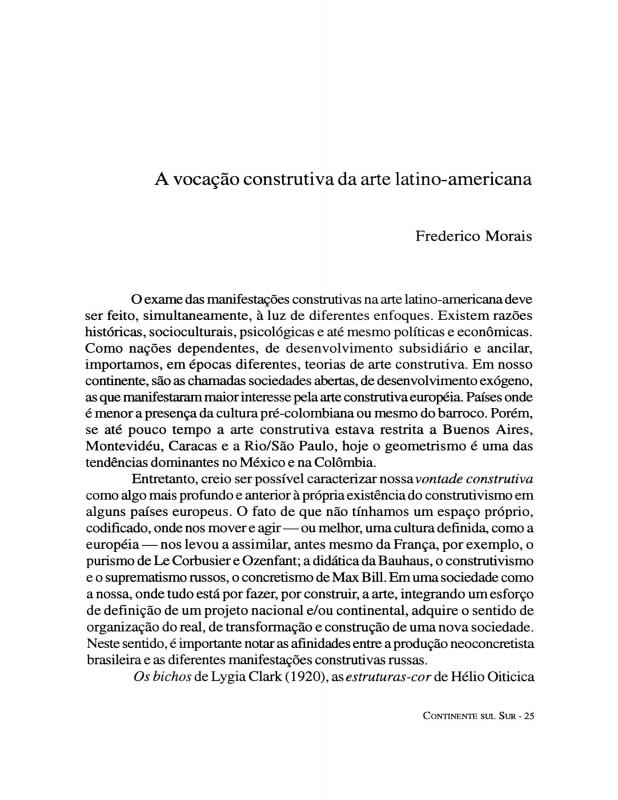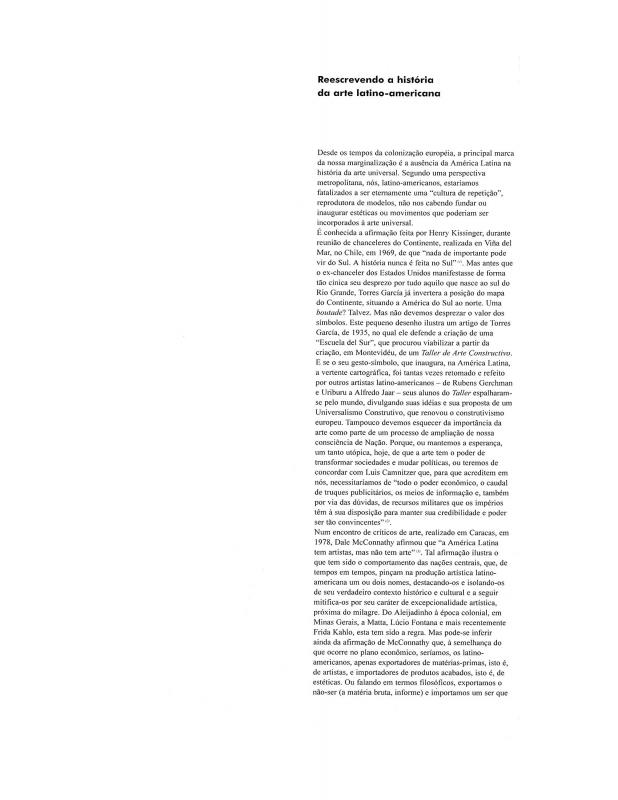Frederico [de] Morais (b.1936) is one of the key figures in Brazilian art criticism. He was a newspaper art critic for many years, at Diário de Notícias and at O Globo, both of which were in Rio de Janeiro. He was one of the most active of the “committed” critics of the 1960s and 1970s, having supported a number of avant-garde movements of the period and worked as a curator.
Here—as in other essays where he specifically discusses “A vocação construtiva da arte latino-americana” [ doc. no. 808244]— Morais’ criticism is intended to show that Latin American art is very far from the reductive classifications or stereotypes that are used in the Art History written by the central powers. This was the inspiration for another essay, “Reescrevendo a história da arte latino-americana” [doc. no. 808314], in which he draws on his background knowledge of the subject.
In his critique of the attempt to organize a Latin American biennial, Morais stresses the noticeable difference between the conventional quality of the exhibition and the great “breakthrough” in terms of theoretical ideas presented at the symposia in lectures and discussions by Mário Pedrosa (Brazil), Ernesto Sábato and Jorge Glusberg (Argentina), Marta Traba (Argentina-Colombia), Rita Eder and Juan Acha (Mexico), among others. According to Morais, the works in the exhibition expressed the theme of “myth and magic” with a disastrous blend of folk art and kitsch but not a hint of critical thought.
In his opinion, the high point of artistic production in São Paulo in 1978 was seen at the theater, not at the Latin American Biennial. He was referring to Macunaíma, the playwright Antunes Filho’s stage adaptation of the novel-rhapsody of the same name by Mário de Andrade (1928). The production became a landmark in contemporary Brazilian theater, inspiring, among other innovations, a move to involve actors in the staging of plays. Morais wrote: “The explosive creativity” of Macunaíma, “is everything that the Latin American Biennial is not, although it could have been.”


